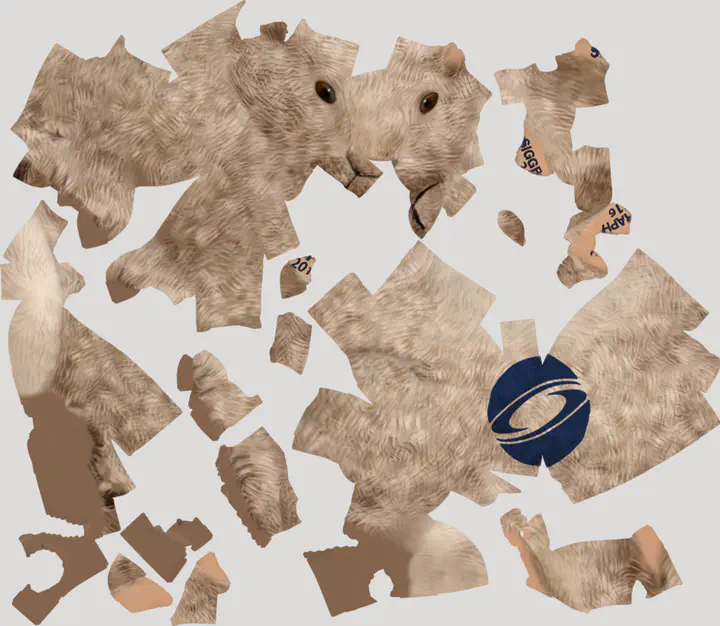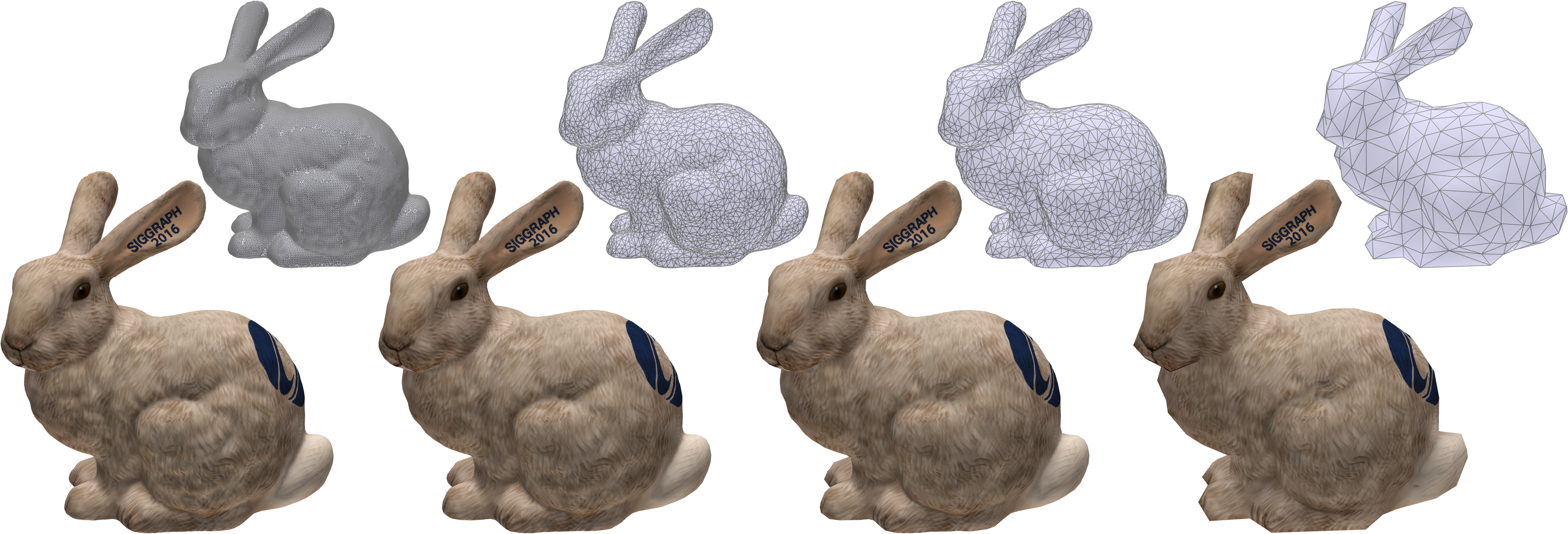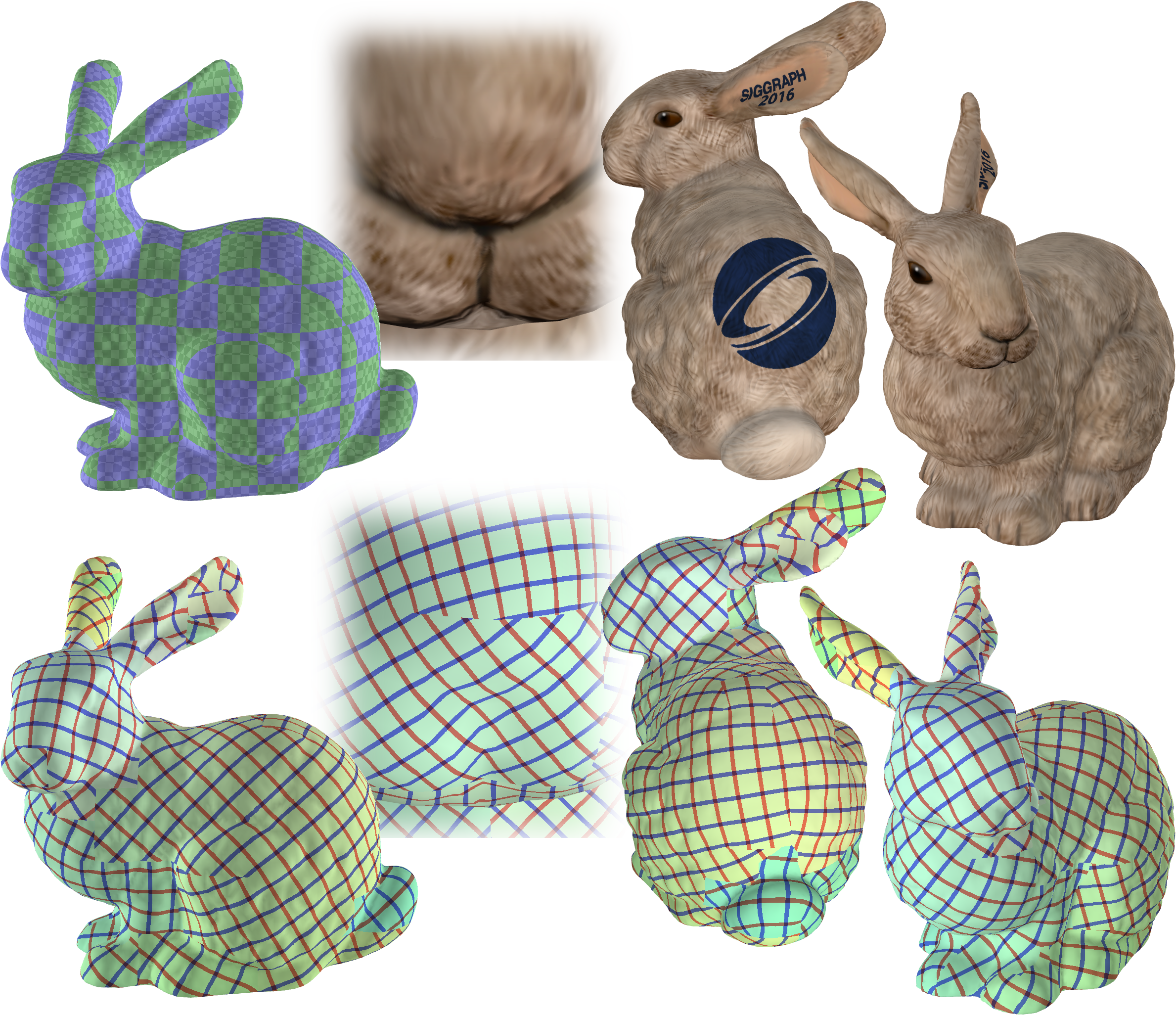
Abstract
UV-maps are required in order to apply a 2D texture over a 3D model.Conventional UV-maps are defined by an assignment of uv positions to mesh vertices. We present an alternative representation, volume-encoded UV-maps, in which each point on the surface is mapped to a uv position which is solely a function of its 3D position. This function is tailored for a target surface: its restriction to the surface is a parametrization exhibiting high quality, e.g. in terms of angle and area preservation; and, near the surface, it is almost constant for small orthogonal displacements.The representation is applicable to a wide range of shapes and UV-maps, and unlocks several key advantages: it removes the need to duplicate vertices in the mesh to encode cuts in the map; it makes the UV-map representation independent from the meshing of the surface; the same texture, and even the same UV-map, can be shared by multiple geometrically similar models (e.g.alllevelsofa LoDpyramid); UV-maps can be applied to representations other than polygonal meshes, like point clouds or set of registered range-maps.Our schema is cheap on GPU computational and memory resources, requiring only a single, cache-coherent indirection to a small volumetric texture per fragment.We also provide an algorithm to construct a volume-encoded UV-map given a target surface. Project page (with demo, sources, etc).

